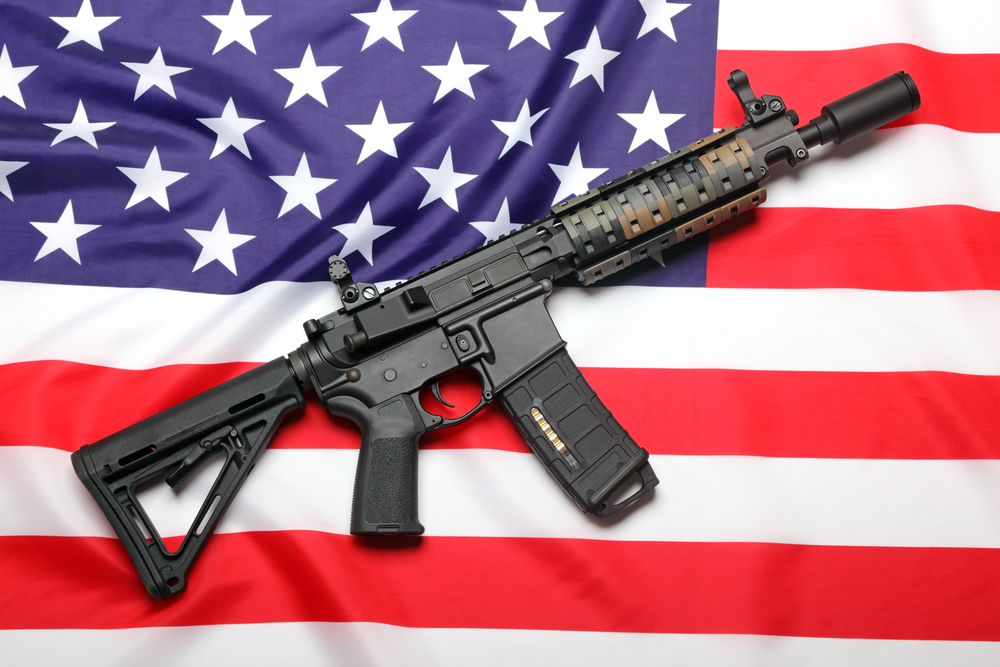How Easy Would It Be to Repeal the 2nd Amendment? History Has an Answer

A former Supreme Court justice is calling for its repeal. One in five Americans want to see it go. The president has come out swinging in its defense.
The Second Amendment has emerged as a dubious target in the U.S. gun debate after a March 27 New York Times op-ed by former justice John Paul Stevens suggested that repealing the amendment would be a "simple" way to move toward gun law reform. A survey conducted in February by The Economist and YouGov found that 21 percent of Americans favor repealing the Second, which reads "A well regulated Militia, being necessary to the security of a free State, the right of the people to keep and bear Arms, shall not be infringed." [5 Milestones in Gun Control History]
President Donald Trump tweeted in response that "THE SECOND AMENDMENT WILL NEVER BE REPEALED," while many activists for gun-law reform said that repeal was not a goal.
"I think a proposal to amend the Constitution to substantially change the Second Amendment would more likely be used by the NRA [National Rifle Association] to galvanize their supporters and maybe even engage less active gun owners," Rep. David Cicilline (D-RI) told The Atlantic.
History of repeal
So that's modern politics. But what of Stevens' assertion that repeal would be "simple?" There's historical precedent for that. Only one constitutional amendment has ever been enacted to repeal another. The Twenty-First Amendment, ratified in 1933, repealed the Eighteenth Amendment, ratified in 1919, which had instituted Prohibition.
The Eighteenth Amendment prohibited the manufacture, sale or transportation of "intoxicating liquors," but the resulting explosion in black markets, bootlegged liquor and organized crime turned public opinion against Prohibition, according to The National Constitution Center.
Public support for the Eighteenth Amendment was never particularly overwhelming anyway, according to The Mob Museum in Las Vegas. In 1922, just three years after the ban on alcohol went into effect, 20 percent of people wanted to see the Eighteenth Amendment repealed, and 40 percent wanted to see modifications to the Volstead Act, the legislation designed to enforce the amendment, according to the museum's online Prohibition history.
Get the world’s most fascinating discoveries delivered straight to your inbox.
By the late 1920s, public opinion was increasingly souring on Prohibition, especially after the 1929 Saint Valentine's Day Massacre, the execution-style killing of seven members of Chicago's North Side Gang. According to the Mob Museum, even Prohibition advocates were over the Eighteen Amendment: Pauline Sabin, the first female member of the Republican National Committee and a former advocate of Prohibition, switched sides in 1929 and started campaigning for repeal. It would be a bit like Wayne LaPierre, the executive vice president of the National Rifle Association, suddenly deciding to oppose the Second Amendment today.
Thank the economy
Meanwhile, as the Great Depression sent unemployment skyrocketing and shantytowns named "Hoovervilles" after President Herbert Hoover popped up around cities, anti-Prohibition advocates declared that repealing the Eighteenth Amendment would open up new sources of revenue for the government and new sources of employment for the destitute.
"By repealing an experiment which, however rightfully intentioned, has failed with lamentable consequence, we should raise vast revenues for the government, we should greatly help agriculture, we should substantially decrease unemployment." John J. Raskob, the chairman of the Democratic National Committee at the time, was quoted as saying in a 1931 economic report. (That report concluded that repeal would bring in almost $1 billion to the federal treasury annually.)
In 1932, Franklin Roosevelt campaigned, in part, for repeal, also using the economic argument for taxing alcohol sales. He won handily over Hoover, who was widely blamed for the Great Depression. The now Democrat-controlled House and Senate started plotting out the Twenty-First Amendment shortly after the election.
Article V of the Constitution provides two paths to amending the Constitution. The first requires two-thirds of state legislatures to call a Constitutional Convention. The Twenty-First Amendment went the second route: Congress called for the amendment with a more than two-thirds majority vote, sending it to the states, which were required to hold referendum votes. These votes would then bind delegates to a convention in each state, where there were straight yes-and-no votes on whether to approve the amendment. According to the Mob Museum, the goal was to avoid "dry" state representatives from holding up the amendment.
The process moved swiftly. Congress passed the repeal of Prohibition on Feb. 21, 1933. Utah approved the amendment on Nov. 7, 1933, providing the necessary two-thirds majority to send it back to Congress, which ratified the amendment on Dec. 5, 1933.
Original article on Live Science.

Stephanie Pappas is a contributing writer for Live Science, covering topics ranging from geoscience to archaeology to the human brain and behavior. She was previously a senior writer for Live Science but is now a freelancer based in Denver, Colorado, and regularly contributes to Scientific American and The Monitor, the monthly magazine of the American Psychological Association. Stephanie received a bachelor's degree in psychology from the University of South Carolina and a graduate certificate in science communication from the University of California, Santa Cruz.


